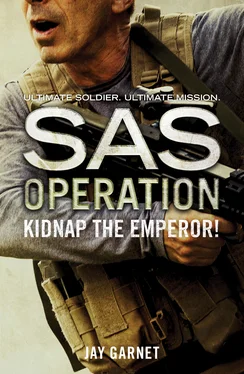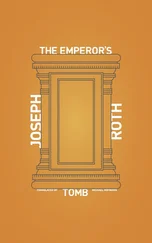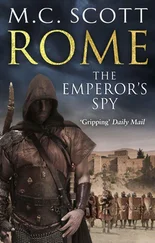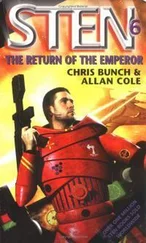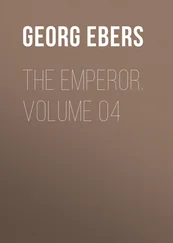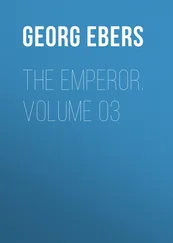JAY GARNET
Published by HarperCollins Publishers Ltd
1 London Bridge Street
London SE1 9GF
www.harpercollins.co.uk
First published in Great Britain by 22 Books/Bloomsbury Publishing plc 1994
Copyright © Bloomsbury Publishing plc 1994
Cover layout design © HarperCollins Publishers Ltd 2015
Cover photograph © Stephen Mulchaey / Arcangel Images
Jay Garnet asserts the moral right to be identified as the author of this work.
A catalogue copy of this book is available from the British Library.
This novel is entirely a work of fiction. The names, characters and incidents portrayed in it are the work of the author’s imagination. Any resemblance to actual persons, living or dead, events or localities is entirely coincidental.
All rights reserved under International and Pan-American Copyright Conventions. By payment of the required fees, you have been granted the non-exclusive, non-transferable right to access and read the text of this e-book on screen. No part of this text may be reproduced, transmitted, down-loaded, decompiled, reverse engineered, or stored in or introduced into any information storage and retrieval system, in any form or by any means, whether electronic or mechanical, now known or hereinafter invented, without the express written permission of HarperCollins.
Source ISBN: 9780008155278
Ebook Edition © December 2015 ISBN: 9780008155285
Version: 2015-11-10
Contents
Cover
Title Page
Copyright Published by HarperCollins Publishers Ltd 1 London Bridge Street London SE1 9GF www.harpercollins.co.uk First published in Great Britain by 22 Books/Bloomsbury Publishing plc 1994 Copyright © Bloomsbury Publishing plc 1994 Cover layout design © HarperCollins Publishers Ltd 2015 Cover photograph © Stephen Mulchaey / Arcangel Images Jay Garnet asserts the moral right to be identified as the author of this work. A catalogue copy of this book is available from the British Library. This novel is entirely a work of fiction. The names, characters and incidents portrayed in it are the work of the author’s imagination. Any resemblance to actual persons, living or dead, events or localities is entirely coincidental. All rights reserved under International and Pan-American Copyright Conventions. By payment of the required fees, you have been granted the non-exclusive, non-transferable right to access and read the text of this e-book on screen. No part of this text may be reproduced, transmitted, down-loaded, decompiled, reverse engineered, or stored in or introduced into any information storage and retrieval system, in any form or by any means, whether electronic or mechanical, now known or hereinafter invented, without the express written permission of HarperCollins. Source ISBN: 9780008155278 Ebook Edition © December 2015 ISBN: 9780008155285 Version: 2015-11-10
Prologue
Chapter 1
Chapter 2
Chapter 3
Chapter 4
Chapter 5
Chapter 6
Chapter 7
Chapter 8
Chapter 9
Chapter 10
Chapter 11
Epilogue
OTHER TITLES IN THE SAS OPERATION SERIES
About the Publisher
Addis Ababa, Ethiopia.
‘Haile Selassie, former Emperor of Ethiopia, who was deposed in a military coup last year, died in his sleep here yesterday aged 83. A statement by Ethiopian radio said he died of an illness after a prostate gland operation two months ago. He was found dead by attendants yesterday.’
The Times , 28 August 1975
April 1976
North and east of Addis Ababa lies one of the hottest places on earth. Known as the Afar or Danakil Depression, after two local tribes, it points like an arrowhead tempered by the desert sun southwards from the Red Sea towards the narrow gash of Africa’s Rift Valley.
For hundreds of square miles the plain is unbroken but for scanty bushes whose images shimmer above the scorched ground. Occasionally here and there a gazelle browses, wandering between meagre thorn bushes across rock or sand streaked with sulphur from the once volcanic crust.
Even in this appalling wilderness, far from the temperate and beautiful highlands more often associated with Ethiopia, there are inhabitants. Most are herders who wander the scattered water-holes. But some make a precarious living trading slabs of salt levered from the desert floor – some five million years ago the depression was a shallow inlet of the Red Sea and its retreat left salty deposits that still cake the desert with blinding white. Camels transport the blocks to highland towns.
Soon after dawn on the morning of 19 April, a caravan of ten camels, groaning under grey slabs of salt done up in protective matting, set off from their camp along unpaved tracks towards the highlands. There were three drovers – two teenagers and their father, a bearded forty-five-year-old whose features seemed parched into premature old age by the desert sun. His name was Berhanu, not that it was known to anyone much beyond his immediate family.
Yet before the week was out it would be known, briefly, to a number of the Marxists who had seized power from the Emperor Haile Selassie eighteen months previously, and most importantly to Lieutenant-Colonel Mengistu Haile Mariam, then number two in the government but in effect already the country’s implacably ruthless leader. A record of Berhanu’s name may still exist in a Secret Police file in 10 Duke of Harar Street, Addis Ababa, along with a brief description of what Berhanu experienced that day.
The caravan had just rounded a knoll of rock. It was approaching midday. Despite a gusty breeze, the heat was appalling – 120 degrees in the shade. Berhanu, as usual at this time, called a halt, spat dust from his lips, and pointed off the road to a small group of doum-palms that would provide shade. He knew the place well. So did the camels. Nearby there was a dip that would hold brackish water.
With the camels couched, the three sought relief from the heat in the shade of the trees. The two boys dozed. It was then that Berhanu noticed, in the trembling haze two or three hundred yards away, a group of circling vultures. He would not have looked twice except that the object of their attention was still moving.
And it was not an animal.
He stared, in an attempt to make sense of the shifting image, and realized he was looking at a piece of cloth being seized and shaken by the oven-hot gusts. Unwillingly he rose, and approached it. As he came nearer, he saw that the cloth was a cloak, and that the cloak seemed to be concealing a body. It had not been there all that long, for the vultures had not yet begun to feed. They retreated at his approach, awaiting a later chance.
The body was tiny, almost childlike, though the cloth – which he now saw was a cloak of good material – would hardly have been worn by a child.
Berhanu paused nervously. Few people came to this spot. It was up to him to identify the corpse, for he would no doubt have to inform some grieving family of their loss. He walked over to the bundle, squatted down and laid the flapping cloak flat along the body, which was lying on its face. He put a hand on the right shoulder, and rolled the body towards him on to its back.
The sight made Berhanu exhale as if he had been punched in the stomach. His eyes opened wide, in shock, like those of a frightened horse. For the face before him, sunken, emaciated, was that of his Emperor, Haile Selassie, the Power of Trinity, Conquering Lion of Judah, Elect of God, King of Kings of Ethiopia. Berhanu had known little of Ethiopia’s steady collapse into poverty, of the reasons for the growing unrest against the Emperor, of the brutalities of the revolution. To him, Selassie was the country’s father. As a child he had honoured the Emperor’s icon-like image on coins and medals inherited from his ancestors. And eight months previously he had ritually mourned the Emperor’s death.
Читать дальше
